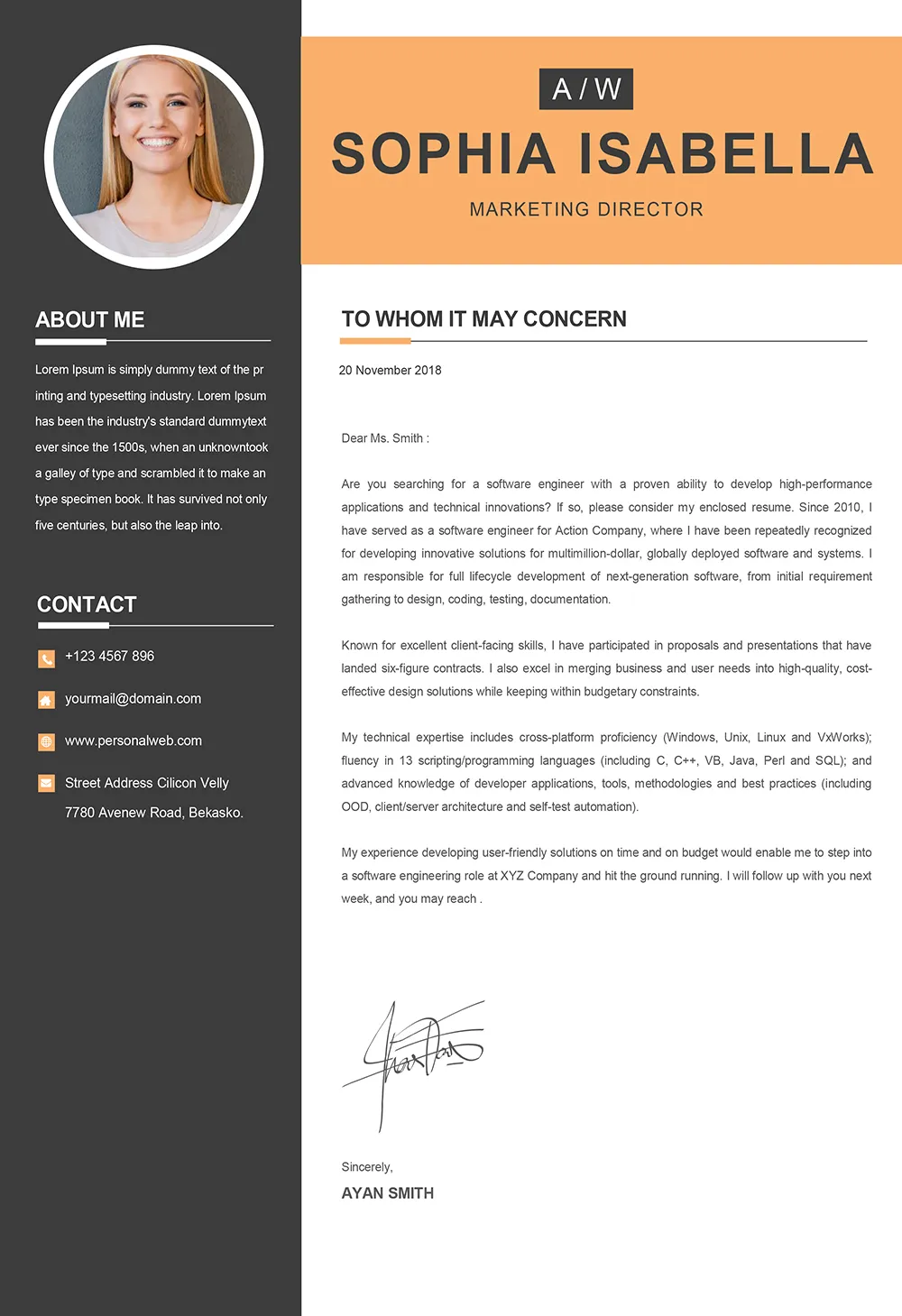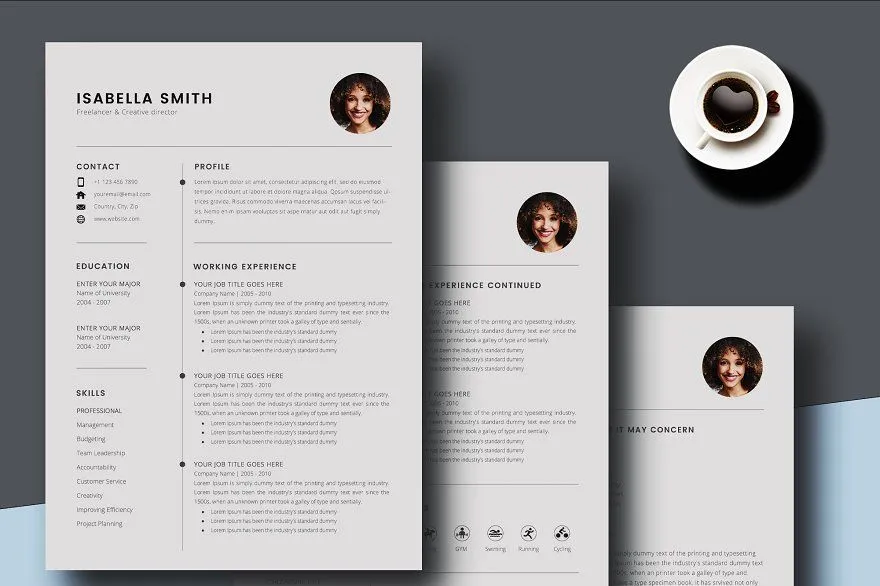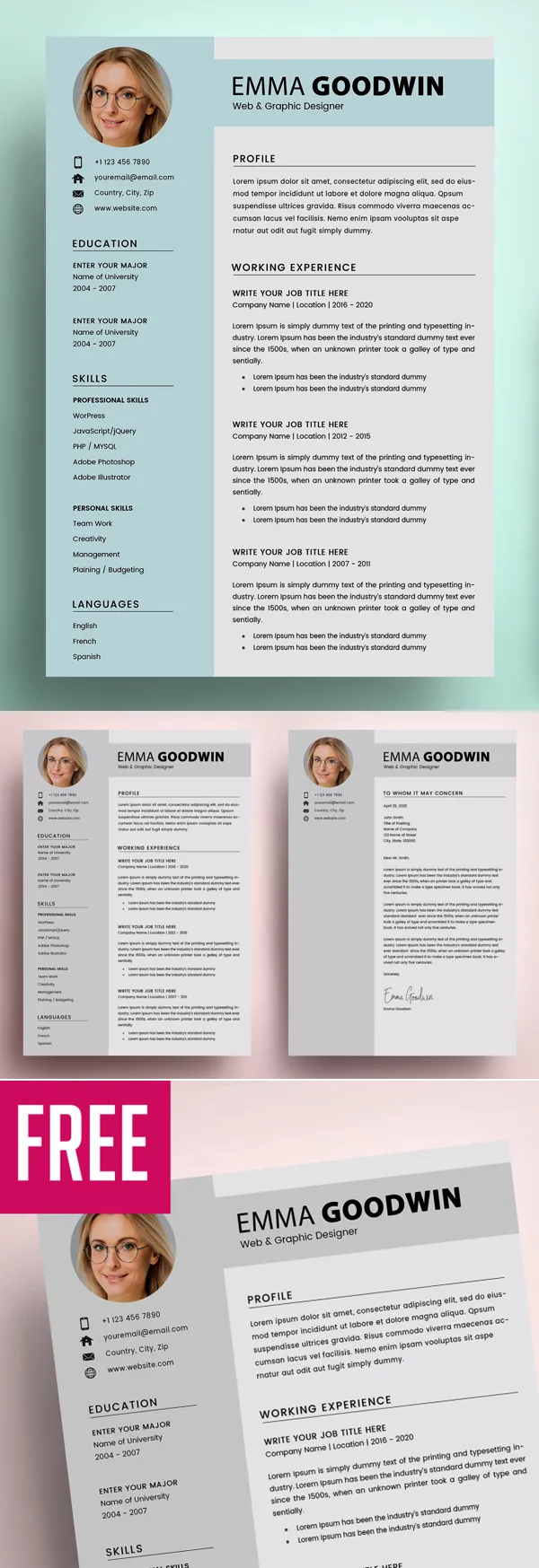CV vs Cover Letter Which is Better?
Navigating the job application process can often feel like traversing a maze. Among the many requirements, two documents frequently stand out CVs (Curriculum Vitae) and cover letters. Both serve the purpose of presenting your qualifications to a potential employer, but they differ significantly in their structure, content, and ultimate goal. Understanding these differences is crucial to crafting effective job applications that grab the attention of hiring managers. Making the right choice between a CV and a cover letter, or knowing when to use which, can dramatically impact your chances of landing an interview. This guide delves into the nuances of each document, providing you with the knowledge to make informed decisions.
Understanding the Purpose of a CV
A CV, or Curriculum Vitae, is a comprehensive document that provides a detailed overview of your entire academic and professional history. Think of it as your professional biography. A CV typically includes your educational background, work experience, skills, publications, awards, and any other relevant achievements. It aims to give employers a complete picture of your capabilities and accomplishments over time. It’s important to understand that in some countries, particularly within academia and scientific fields, a CV is the standard document used for job applications. The purpose is to showcase the depth and breadth of your experience, making it suitable for roles where a detailed record of your qualifications is necessary.
What Should be Included in a CV?

A well-structured CV is easy to read and quickly highlights your key strengths. It typically begins with your contact information, followed by a summary or objective statement (optional), which provides a brief overview of your professional goals. Next comes your education section, listing degrees, institutions, and dates. The work experience section is where you detail your previous roles, responsibilities, and achievements, often using bullet points to emphasize key accomplishments. This section should be arranged in reverse chronological order, with your most recent job appearing first. Include skills, professional affiliations, publications, presentations, and awards. Be sure to tailor your CV to the specific job, emphasizing experiences and skills most relevant to the position. Ensure the CV is clear, concise, and free of errors.
CV Length and Formatting Tips
Unlike a cover letter, a CV’s length can vary depending on your experience. In general, a CV should be concise and easy to scan. Early-career professionals often have a CV of one to two pages. Those with extensive experience may extend it to three or more pages, especially if they have a significant publication record. Formatting is crucial for readability. Use clear headings, consistent fonts, and ample white space. Bullet points are your friend here, as they allow you to highlight key accomplishments and responsibilities. Avoid dense blocks of text; instead, break up information into digestible chunks. Proofread thoroughly for any grammatical errors or typos. Consider using a professional template to ensure a polished look, but prioritize content relevance over aesthetic flourishes.
Understanding the Purpose of a Cover Letter
A cover letter is a tailored document that introduces you to a potential employer. It’s a personalized letter that accompanies your CV, providing context and explaining why you’re a suitable candidate for a specific role. The main goal of a cover letter is to highlight the relevant skills and experiences from your CV that align with the job requirements. It gives you the opportunity to demonstrate your interest in the company and the position, as well as showcase your personality and writing skills. Unlike a CV, which is static, a cover letter allows you to tell a story about why you are the best fit for the job.
What Should be Included in a Cover Letter?

A well-crafted cover letter opens with a compelling introduction, immediately stating the position you’re applying for and how you learned about it. The body paragraphs should highlight specific skills and experiences from your CV that match the job description. Use examples to illustrate how you’ve successfully applied these skills in previous roles. It is important to customize your cover letter for each job application. Research the company and the role, and demonstrate your understanding of the company’s needs. Your cover letter should also convey enthusiasm and a genuine interest in the opportunity. The conclusion should express your eagerness for an interview and provide contact information. Always tailor the letter to the specific job and the company.
Cover Letter Formatting and Tone
Formatting a cover letter correctly is important. Keep it concise, typically one page in length. Use a professional font and maintain consistent formatting throughout the document. Address the letter to a specific person, if possible. The tone should be professional yet enthusiastic. Avoid sounding generic; instead, demonstrate your personality and genuine interest in the role. Use active voice and strong verbs to showcase your achievements and skills. Proofread carefully, paying attention to grammar, spelling, and punctuation. The goal is to make a positive first impression by presenting yourself as both capable and enthusiastic.
Key Differences between a CV and a Cover Letter
The primary distinction between a CV and a cover letter lies in their purpose and content. A CV provides a comprehensive record of your qualifications and history, while a cover letter is a targeted document that introduces you and highlights why you are a strong match for a specific role. A CV is a factual document, showcasing your education, experience, skills, and achievements in a chronological order. A cover letter is a narrative document, where you can explain your interest in the role, elaborate on relevant skills, and showcase your writing ability. A CV is typically longer and more detailed, while a cover letter is concise and tailored to the specific job. In the job search process, they work together to present a complete picture of your qualifications.
When to Use a CV

Deciding when to use a CV depends on the job and the location. In academic, scientific, and medical fields, a CV is almost always required. It is usually the preferred document for research positions, grants, and fellowships. If you are applying for a job in Europe, the Middle East, Africa, or Asia, a CV is likely the standard document employers will expect. Always read the job description carefully. If the posting specifies a CV, be sure to provide one. If there is a question, consider whether a detailed history of your professional and academic experiences is useful for the position. In general, when detailed information about your background is needed, a CV is the best choice.
When to Use a Cover Letter
A cover letter should accompany your CV whenever you are applying for a job, unless the job posting explicitly states otherwise. It’s an opportunity to make a personalized introduction, showcase your interest in the company, and explain how your skills align with the specific requirements of the job. A cover letter is especially important if you’re changing careers, as it allows you to explain why you’re making the transition. It also helps when you have gaps in your employment history, or if your CV doesn’t fully capture your relevant skills. If you want to showcase your personality, writing skills, and enthusiasm, the cover letter is a perfect vehicle to convey these aspects to the recruiter or hiring manager.
5 Key Tips to Determine Which One is Best
Knowing the key differences between a CV and cover letter allows you to choose the best approach for your job application. Here are five key tips to help you decide which document to use, or how to use both effectively.
Tip 1 Tailor to the Job

Always tailor your application materials to the specific job and company. Review the job description carefully, paying close attention to the required skills, experience, and qualifications. Customize your CV and cover letter to highlight the elements that are most relevant. Use the same keywords and phrases that appear in the job posting. By demonstrating how your skills and experiences align with their needs, you significantly increase your chances of securing an interview. If the job posting does not specify, choose the application that best allows you to emphasize these crucial points.
Tip 2 Highlight Relevant Skills
Both your CV and cover letter are opportunities to showcase your skills. In your CV, list your skills in a dedicated section or integrate them within your experience descriptions. In your cover letter, go beyond simply listing skills. Provide specific examples of how you’ve used those skills to achieve results. Quantify your achievements whenever possible. This might involve using numbers or statistics to demonstrate your impact in previous roles. Tailor the skills you highlight to match those required by the job description. Make sure you understand the job and match it with your core abilities, showing you have what it takes to succeed.
Tip 3 Consider Industry Standards
Different industries have different norms. In academia, research, and some scientific fields, a CV is the standard document. In other industries, such as business, marketing, and technology, a cover letter is usually expected. Research the typical application requirements for your target industry. Check company websites, job boards, and professional organizations for best practices. If you’re unsure, it’s often best to submit both a CV and a cover letter, especially if the job posting does not specify. Pay attention to the culture of the company and tailor your approach accordingly. If you are unsure, use both a CV and a cover letter to make a strong first impression.
Tip 4 Evaluate Employer Preferences

When applying for jobs, look closely at the instructions provided in the job posting. Does the employer explicitly request a CV, a cover letter, or both? If the instructions are clear, follow them precisely. If the job posting doesn’t mention either document, consider the nature of the role and the type of information needed. If the job requires a detailed account of your experience and qualifications, a CV might be more appropriate. If you want to personalize your application and showcase your personality, a cover letter is the better option. Following employer preferences, demonstrates attention to detail and respect for the hiring process. Always follow the instructions given to you.
Tip 5 Proofread Carefully
Regardless of which document you choose to use, always proofread your application materials carefully. Errors in grammar, spelling, and punctuation can make you look unprofessional. Use a grammar checker and ask a friend or colleague to review your documents. Pay attention to the formatting, ensuring that your document is easy to read and visually appealing. Double-check all the information, including your contact details and the names of the companies and people you mention. Taking the time to proofread demonstrates your attention to detail, which can significantly improve your chances of making a positive impression. A polished, error-free document shows you are serious about the opportunity and makes you appear more competent.
In conclusion, understanding the purpose and structure of a CV and cover letter is essential for a successful job search. Choose the document (or combination of documents) that best suits the job requirements and your individual strengths. Remember to tailor your materials, highlight relevant skills, consider industry standards, and always proofread carefully. By following these tips, you will be able to create effective job applications that get noticed.
